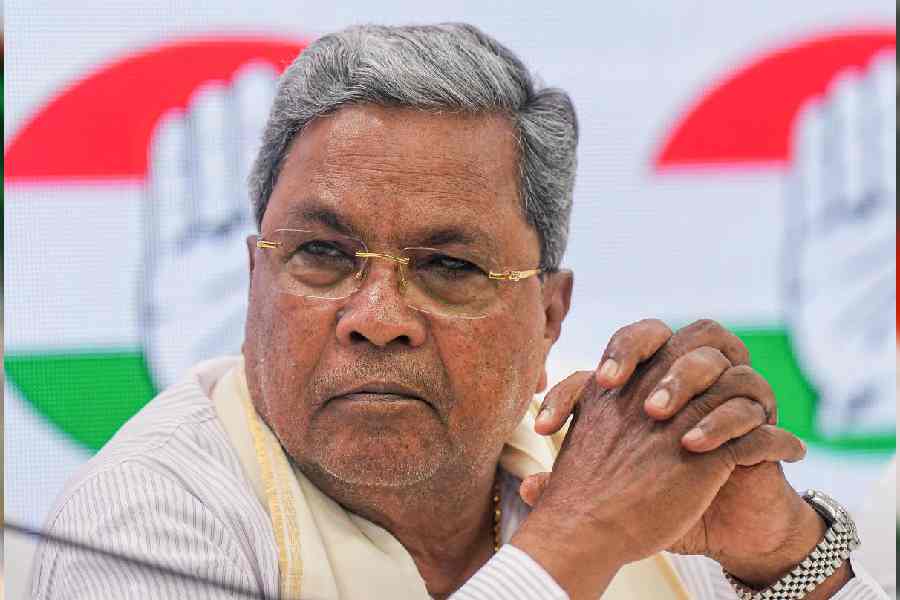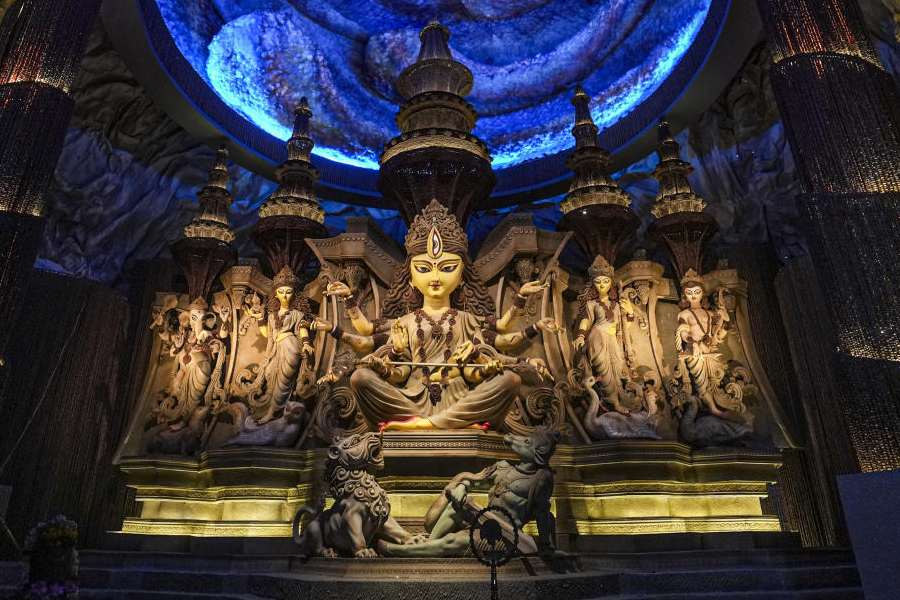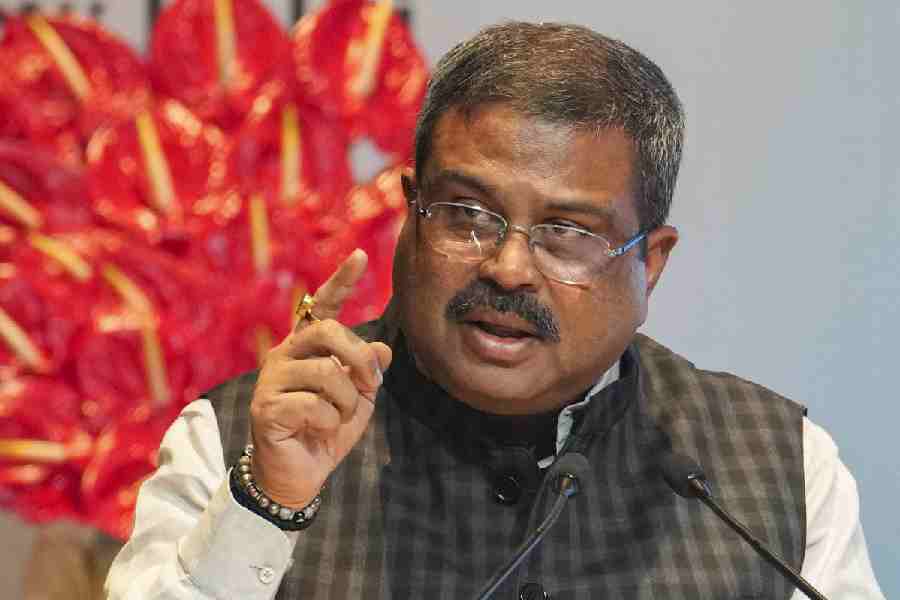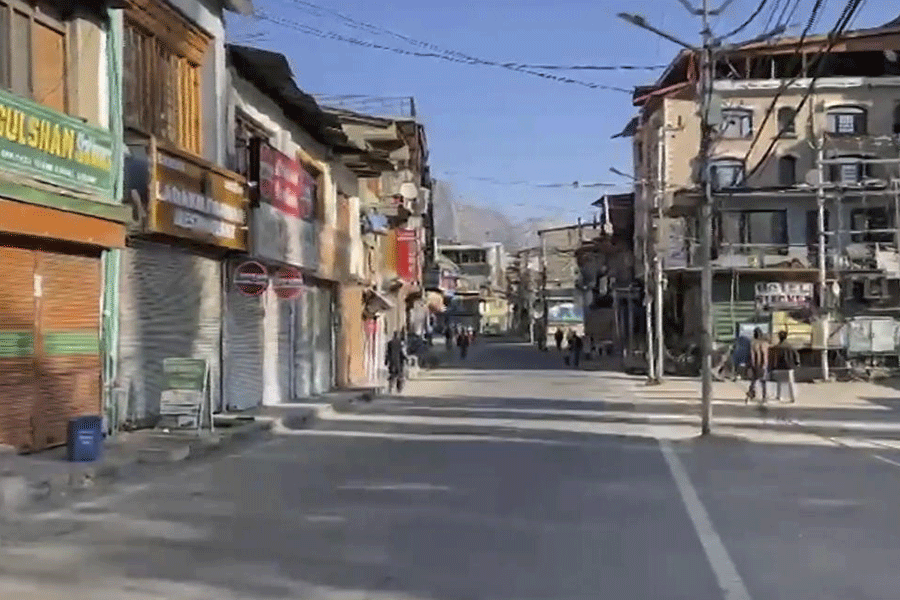 |
 |
| King George V and Queen Mary (above) arriving in Calcutta to a grand reception in December 1911 |
The durbar of 1911 at which the King, George V, announced that Delhi would be the site of the new capital of the British Empire in India was not without a touch of the bizarre. When the show of pomp and the grandeur was over and the crowd was dispersing from the amphitheatre, it was noticed that “some bare-headed people approached the dais and bent themselves double before the thrones…. Their attitude was so reverent that it almost seemed that the ‘white maharaja and maharani’ had been included in the Hindu pantheon…and that their devotees were offering worship before the empty chairs.’’ The identity of these people mystified observers. It was subsequently discovered that they were Bengalis.
There was some irony in this show of reverence and loyalty since this group of Bengalis was obviously unaware that the object of their devotion, the King Emperor, had just reduced the importance of their province by announcing that the capital of British India would be shifted from Calcutta to Delhi. The ignorance of this group may have been caused by the fact that except for a few within hearing distance no one had actually heard the announcement that George V had made. The news of the transfer of capital became common knowledge after the official gazette containing the announcement was swiftly printed and distributed. It is entirely possible, of course, that this group of Bengalis had heard the announcement by the King but the reduction in the importance of Bengal could dilute not their loyalty to the British rulers.
 |
 |
| Rabindranath Tagore composed Jana Gana Mana (middle) in 1911 for the annual session of the Indian National Congress; (above) the Viceroy Lord Hardinge became a hate figure for the British in Calcutta and The Statesman titled one leader H.M.G. — not His Majesty’s Government but Hardinge Must Go |
But not everyone in Bengal and Calcutta shared the sentiments of the Raj worshippers in Delhi. The Englishman, the mouthpiece of non-official British opinion in Calcutta wrote, “The government is making a grave mistake. To run away from Bengal to Delhi is as bad as, or worse than, remaining in Simla throughout the year…If the government goes to Delhi, Calcutta will suffer.’’ The last sentence only reiterated the obvious.
The British government was conscious that the transfer of the capital would be a blow to Calcutta and to Bengal. To soften the impact, it was also announced in the durbar that the 1905 partition of Bengal would be revoked. The reactions to this move did not move along predictable lines. The prevailing feeling was that the British had given something to Bengal with their left hand and had taken away something equally important with their right hand. Bengal was united once again but Calcutta was no longer India’s capital city. “They have wiped our eyes and knocked out one eye in doing so’’ were the words with which Calcutta’s reaction was described. The Europeans living in Calcutta felt betrayed, and their anger and disappointment was expressed in The Statesman, the newspaper that was once called The Friend of India and was the voice of the white population. The Statesman titled one leader H.M.G. — not His Majesty’s Government but Hardinge Must Go. Lord Hardinge was the Viceroy when the transfer of capital was announced.
Those who had planned the transfer to Delhi were dubbed the “unhappy desecrators of Calcutta’’, and the foundation stones of the new capital were described as tombstones. What hurt the European population was not the fear that with the transfer Calcutta would lose its commercial and economic importance. Most of the leading British companies — managing agencies as they were called — had their head offices in Calcutta. Well known managing agencies Andrew Yule, Bird and Co. and Gillanders Arbuthnot did not shift their head offices to Delhi. They never did. Only the flag moved to Delhi, trade remained in Calcutta. The European lament was related to the loss of direct access to political power and privilege. Once the capital moved, the burra sahibs (as the heads of the managing agencies were known in local parlance) would have to travel to Delhi to meet the Viceroy and they would miss his dinner and tea parties.
 |
| In July 1911 Mohun Bagan caused a sensation by defeating the East Yorkshire Regiment to win the IFA Shield; (below) Yule House, the elegant headquarters of the eponymous managing agency started by Andrew Yule (below) was built in 1907 just before the government’s move to Delhi |
 |
 |
One indirect consequence of the transfer became manifest some years after the event. The Bengalis’ brief flirtation with mass politics and the bomb during the Swadeshi movement (as the anti-partition protests came to be called) ended as the 20th century entered its second decade. Hardinge was right when referring to the anti-partition movement, he said, “It’s dead, it’s dead, it’s dead,’’ echoing perhaps Alice’s famous dictum, “What I say three times is true.’’
What was more significant was that politics in India was acquiring a different dimension in which Calcutta would no longer have a leadership. Political leaders from western and northern India would become national leaders marginalising their peers from Bengal. India would no longer echo tomorrow what Bengal thought today. The eclipse of Bengal and Calcutta had begun even though it would take five more decades to see the dark side of the moon in Bengal.
The year 1911 is etched in the Bengali mind for another event that occurred a few months before the durbar in Delhi. In July that year, 11 footballers belonging to Mohun Bagan, a quintessentially Bengali athletic club defeated East Yorkshire Regiment to win the IFA Shield. An Indian team had beaten a British team: an underdog had turned the tables. The idea of the winning underdog was highlighted because 10 out of the 11 Mohun Bagan players had played without boots. Dribbling and shooting on a football pitch made slushy by the Calcutta monsoon could not have been easy for the Bengali players. The 1911 victory thus entered the Bengali nationalist imagination.
Another event happened in Calcutta at the end of 1911, which became important in the context of what happened many years later. In December, Rabindranath Tagore composed a song that was sung at the annual session of the Indian National Congress, which that year was held in Calcutta. This song — Jana Gana Mana — was made into India’s national anthem in 1950.
1911 was thus a landmark year in the history of Calcutta. Looking back, the year probably marked the beginning of Calcutta’s political decline. The economic decline was still many decades away. Calcutta retained its place as the home of culture that strengthened India’s national pride and identity. The second city of the British Empire struggled once independence came to retain its place as the second city of independent India. It was a struggle Calcutta lost, never to recover. 1911 is thus a moment of nostalgia.











